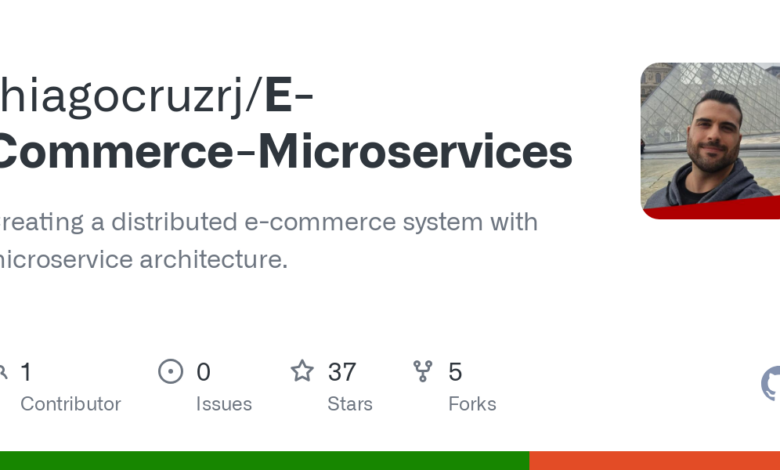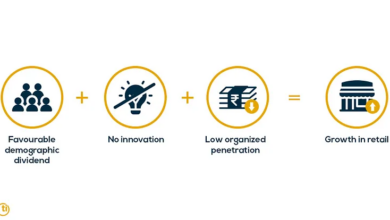
Business Services Microservices in Digital Commerce
Business services are the ideal application of microservices in digital commerce. Think about it – the sheer scale and complexity of modern online marketplaces demand a level of flexibility and scalability that traditional monolithic architectures simply can’t deliver. This post dives deep into why microservices are the perfect fit for powering the various business services that make e-commerce tick, from order processing to payment gateways and beyond.
We’ll explore the advantages, challenges, and best practices for building a robust and resilient microservices-based e-commerce platform.
We’ll cover everything from designing individual microservices and handling inter-service communication to addressing scalability, security, and the importance of effective monitoring. Real-world examples and case studies will illustrate how companies are leveraging microservices to achieve significant improvements in agility, performance, and overall business outcomes. Get ready to unlock the potential of microservices for your digital commerce strategy!
Defining Business Services in Digital Commerce: Business Services Are The Ideal Application Of Microservices In Digital Commerce

Digital commerce isn’t just about buying and selling products online; it’s a complex ecosystem fueled by a vast array of interconnected business services. These services are the invisible infrastructure that enables seamless transactions, personalized experiences, and efficient operations for both businesses and consumers. Understanding these services and how they can be effectively architected is crucial for success in today’s competitive landscape.Digital commerce relies on a wide spectrum of business services, ranging from core functionalities like payment processing and order management to more specialized services such as fraud detection, customer relationship management (CRM), and personalized recommendations.
These services can be categorized broadly into transactional, operational, and analytical functions, each playing a vital role in the overall digital commerce experience. For example, a simple online purchase involves numerous underlying services working in concert: the shopping cart, payment gateway, inventory management system, shipping logistics, and customer support.
Examples of Business Services and Microservices Suitability
The following table illustrates several business services common in digital commerce, their scalability needs, and their suitability for a microservices architecture. Microservices, with their independent deployment and scalability, offer significant advantages for many of these services.
| Service Name | Description | Scalability Needs | Microservice Suitability |
|---|---|---|---|
| Payment Processing | Handles secure online payments using various methods (credit cards, PayPal, etc.). | High, needs to handle peak transaction volumes during sales events. | Excellent; allows independent scaling of payment gateways based on demand. |
| Order Management | Manages the entire order lifecycle, from placement to fulfillment. | Medium to High; needs to handle increasing order volume and complex order scenarios. | Good; allows separate scaling of order processing, inventory management, and shipping modules. |
| Inventory Management | Tracks product availability in real-time across multiple warehouses or locations. | Medium; needs to handle frequent updates and accurate stock levels. | Good; can be easily integrated with other services like order management and shipping. |
| Recommendation Engine | Provides personalized product recommendations based on user behavior and preferences. | High; needs to handle large datasets and complex algorithms for real-time recommendations. | Excellent; allows independent scaling and updates to recommendation algorithms without affecting other services. |
| Customer Support | Provides various channels for customer support (email, chat, phone). | High, especially during peak demand or product launches. | Good; allows for separate scaling of different support channels and integration with other systems. |
Challenges of Managing Business Services Without Microservices, Business services are the ideal application of microservices in digital commerce
Managing a large-scale digital commerce platform without a microservices architecture presents several significant challenges. A monolithic architecture, where all services are tightly coupled within a single application, leads to reduced agility, slower deployment cycles, and increased risk of system-wide failures. For instance, a bug in one component can bring down the entire system. Scaling becomes a significant hurdle, as the entire application needs to be scaled even if only one service experiences high demand.
Furthermore, technology upgrades and deployments become complex and risky, requiring significant downtime and coordination. Independent development and deployment of individual services, a key advantage of microservices, is simply not possible in a monolithic environment. This inflexibility inhibits innovation and rapid response to changing market demands.
Microservices Architecture

Microservices have emerged as a powerful architectural style for building modern, scalable, and maintainable business services in the digital commerce landscape. This approach contrasts sharply with traditional monolithic architectures, offering significant advantages in agility and efficiency. Understanding the core principles of microservices and their applicability is crucial for businesses aiming to leverage the full potential of digital commerce.Microservices architecture fundamentally decomposes a large application into a collection of small, independent, and deployable services.
Each service focuses on a specific business function, communicating with others via well-defined APIs. This contrasts with the monolithic approach where all functionalities reside within a single, large application. This modularity is key to the benefits microservices offer.
Core Principles of Microservices Architecture
The foundation of a successful microservices implementation rests on several key principles. These principles ensure that the system remains manageable, scalable, and resilient. Each service operates independently, with its own database and technology stack, allowing for greater flexibility and innovation. Furthermore, robust communication mechanisms, often leveraging lightweight protocols like REST or gRPC, enable seamless interaction between services.
Finally, automated deployment and monitoring tools are essential for efficient management of the distributed system. Failure of one service should not cascade and bring down the entire system, ensuring high availability.
Microservices vs. Monolithic Architectures
In a monolithic architecture, all components of an e-commerce application – user accounts, product catalog, shopping cart, payment gateway – are tightly coupled within a single codebase. This creates challenges in scaling, deployment, and maintenance. Updates require deploying the entire application, increasing risk and downtime. In contrast, a microservices architecture allows independent scaling of individual services. For example, during peak shopping seasons, only the shopping cart and payment gateway services might require scaling, leaving other services unaffected.
This granular control significantly reduces resource consumption and improves overall efficiency. Furthermore, independent deployments allow for faster release cycles and iterative development, enabling businesses to respond quickly to market demands and customer feedback. A change in the payment gateway, for example, doesn’t require redeploying the entire application.
Advantages of Microservices for Business Services
The benefits of adopting a microservices architecture for business services in digital commerce are substantial. Increased agility allows for faster development and deployment cycles, enabling businesses to quickly adapt to changing market conditions and customer expectations. Netflix, for instance, relies heavily on microservices, enabling them to rapidly deploy new features and updates to their streaming platform. Scalability allows individual services to be scaled independently to handle fluctuating demands, ensuring optimal performance even during peak traffic periods.
Amazon, with its vast e-commerce infrastructure, utilizes microservices to manage the massive traffic volume it handles daily. Maintainability is significantly improved due to the smaller, more focused codebases. Debugging and troubleshooting become easier, and individual services can be updated or replaced without impacting the entire system. This modularity reduces the overall complexity and improves the long-term sustainability of the application.
Designing Microservices for Specific Business Services
Designing a robust and scalable e-commerce platform requires careful consideration of its underlying architecture. A microservices approach offers significant advantages in terms of flexibility, maintainability, and independent deployment. This section will delve into the design of microservices for a specific business service – order processing – to illustrate the practical application of this architectural style.
Order Processing Microservices Architecture
The order processing workflow can be effectively decomposed into several independent microservices, each responsible for a specific aspect of the process. This modularity enhances development efficiency and simplifies future scaling and maintenance.
- Order Service: This core microservice manages the creation, retrieval, updating, and deletion of order information. It interacts with other services to validate inventory, process payments, and update customer accounts.
- Inventory Service: This service maintains real-time inventory levels. It checks product availability and updates stock quantities after an order is successfully placed. It uses a database optimized for read-heavy operations to ensure quick response times.
- Payment Service: This microservice handles all payment-related operations, including integrating with various payment gateways (e.g., Stripe, PayPal). It manages transactions, handles refunds, and ensures secure processing of sensitive financial data.
- Shipping Service: This service manages shipping logistics, including calculating shipping costs, generating shipping labels, and tracking shipments. It might integrate with third-party shipping providers (e.g., FedEx, UPS).
- Customer Service: This service manages customer-related information, including profiles, addresses, and order history. It ensures data consistency and provides a centralized view of customer interactions.
Inter-service Communication Challenges and Solutions
Effective communication between microservices is crucial for a seamless order processing experience. However, various challenges can arise, including network latency, service failures, and data consistency issues.Several strategies can mitigate these challenges:
- Asynchronous Communication: Utilizing message queues (e.g., RabbitMQ, Kafka) enables asynchronous communication between microservices. This decoupling improves resilience and allows services to operate independently, even if one experiences temporary downtime. For instance, the Order Service can send a message to the Inventory Service to update stock levels after an order is placed, without waiting for a direct response. The Inventory Service can process this message at its own pace.
- API Gateways: An API gateway acts as a central point of entry for external clients and manages routing requests to the appropriate microservices. It handles authentication, authorization, and rate limiting, simplifying the client’s interaction with the system. It can also aggregate responses from multiple microservices to provide a unified response to the client.
- RESTful APIs: Microservices communicate via well-defined RESTful APIs, using standard HTTP methods (GET, POST, PUT, DELETE). This approach ensures interoperability and promotes loose coupling between services. JSON is commonly used for data exchange.
Microservice Interaction Diagram
The following text-based diagram illustrates the interaction flow between the microservices during an order processing scenario:“`Client –> API Gateway –> Order ServiceOrder Service –> Inventory Service (Asynchronous – Message Queue)Order Service –> Payment Service (Asynchronous – Message Queue)Payment Service –> Order Service (Success/Failure Notification)Order Service –> Shipping Service (Asynchronous – Message Queue)Order Service –> Customer Service (Update Customer Order History)“`This shows the Order Service as the central orchestrator, interacting asynchronously with other services through a message queue for improved resilience and scalability.
The API Gateway handles client requests and manages communication with the backend microservices.
Addressing Scalability and Resilience
Building a robust and scalable digital commerce platform using microservices requires careful consideration of how individual services handle increasing traffic and potential failures. A single point of failure can bring down the entire system, so designing for resilience is paramount. This section explores strategies for ensuring the scalability and resilience of your microservices-based business services.The key to scalability and resilience lies in designing for independent scaling and graceful degradation.
Instead of a monolithic architecture where a single point of failure can cascade throughout the system, microservices allow for individual components to scale independently based on demand. This means that if one service experiences high traffic, only that service needs to be scaled, without impacting other parts of the system. Similarly, if one service fails, the rest of the platform can continue operating.
Load Balancing Strategies
Effective load balancing distributes incoming requests across multiple instances of a microservice, preventing any single instance from becoming overloaded. This ensures consistent performance even during peak demand. Common load balancing techniques include round-robin, least connections, and IP hash. Round-robin distributes requests sequentially across instances, least connections directs requests to the instance with the fewest active connections, and IP hash assigns requests to a specific instance based on the client’s IP address, ensuring session persistence.
For example, during a flash sale, a round-robin approach could distribute the surge of traffic evenly across several instances of the product catalog service, preventing any single instance from crashing. Implementing a robust load balancer is crucial for handling the fluctuating demands of e-commerce.
Failover Mechanisms
Failover mechanisms are essential for maintaining service availability in the event of a service failure. These mechanisms automatically redirect traffic from a failed instance to a healthy one. Techniques include active-passive setups, where a standby instance takes over if the primary instance fails, and active-active setups, where multiple instances operate simultaneously, and traffic is automatically switched if one fails.
For instance, if the payment processing service fails, a failover mechanism could automatically redirect requests to a backup instance, minimizing disruption to the checkout process. The choice between active-passive and active-active depends on the criticality of the service and the acceptable downtime.
Database Replication and Scaling
Databases are often a bottleneck in scalable systems. Implementing database replication, where data is copied to multiple databases, ensures high availability and performance. Techniques include master-slave replication, where a master database handles writes and slave databases handle reads, and multi-master replication, where multiple databases can handle both reads and writes. For a high-volume e-commerce platform, a multi-master setup could distribute the database load across multiple regions, minimizing latency and ensuring data availability even in the event of a regional outage.
Proper database scaling is crucial for handling the high volume of transactions common in e-commerce.
Monitoring and Alerting
Comprehensive monitoring and alerting systems are critical for proactively identifying and responding to potential issues. These systems track key performance indicators (KPIs) such as response times, error rates, and resource utilization. Automated alerts notify administrators of anomalies, allowing for prompt intervention. For example, if the response time of the inventory service exceeds a predefined threshold, an alert is triggered, enabling the team to investigate and address the problem before it impacts users.
Real-time monitoring and proactive alerts are essential for maintaining the resilience of the system.
Circuit Breakers
Circuit breakers prevent cascading failures by stopping requests to a failing service. When a service consistently fails, the circuit breaker “opens,” preventing further requests. After a period of time, the circuit breaker attempts to “close,” sending a test request. If the service is healthy, the circuit breaker closes, allowing requests to resume. This prevents a single failing service from overwhelming the entire system.
For example, if the shipping service repeatedly fails, the circuit breaker will prevent further requests, protecting other services that depend on it, such as order fulfillment.
Security Considerations in Microservices for Business Services
The shift towards microservices architecture in digital commerce offers numerous advantages, but it also introduces a complex security landscape. Securing these independent services requires a multifaceted approach, addressing vulnerabilities at each layer and considering the increased attack surface presented by the distributed nature of the system. Failing to adequately address security can lead to significant data breaches, financial losses, and reputational damage.
This section explores key security concerns and best practices for building secure microservices-based business services.
Key Security Concerns in Microservices Architectures
Microservices, due to their distributed nature and independent deployment cycles, present unique security challenges. The increased number of communication points between services increases the potential for vulnerabilities. Furthermore, the independent management of each microservice necessitates a robust and consistent security posture across the entire ecosystem. Improperly secured communication channels, weak authentication mechanisms, and inadequate data protection strategies are among the most prominent risks.
A single compromised microservice can potentially provide access to the entire system if security isn’t meticulously managed.
Security Best Practices for Securing Microservices-Based Business Services
Implementing robust security measures is paramount for the success of a microservices-based system. A layered approach, incorporating multiple security mechanisms, is essential.
- Secure Communication Channels: All communication between microservices should be encrypted using HTTPS or similar protocols. This protects sensitive data from eavesdropping and tampering during transit. Consider using mutual TLS authentication to verify the identity of both communicating parties.
- Input Validation and Sanitization: Thoroughly validate and sanitize all inputs received by each microservice. This prevents injection attacks, such as SQL injection or cross-site scripting (XSS), which can compromise the system’s integrity.
- Regular Security Audits and Penetration Testing: Conduct regular security audits and penetration testing to identify vulnerabilities and weaknesses in the microservices architecture. This proactive approach allows for the timely remediation of potential threats.
- Least Privilege Principle: Each microservice should only have the necessary permissions to perform its designated tasks. This limits the impact of a potential breach, preventing an attacker from gaining excessive access to the system.
- Robust Logging and Monitoring: Implement comprehensive logging and monitoring to track all activities within the microservices ecosystem. This enables the detection of suspicious activities and facilitates incident response.
- Secure Configuration Management: Use a centralized configuration management system to ensure consistent security configurations across all microservices. This prevents inconsistencies that could lead to vulnerabilities.
- Automated Security Testing: Integrate automated security testing into the CI/CD pipeline to identify vulnerabilities early in the development lifecycle. This includes static and dynamic application security testing (SAST and DAST).
- Secrets Management: Utilize a dedicated secrets management solution to securely store and manage sensitive information such as API keys, database credentials, and encryption keys. Avoid hardcoding these secrets directly into the code.
Authentication and Authorization Mechanisms in Microservices
Implementing robust authentication and authorization mechanisms is critical for controlling access to microservices and the data they manage. These mechanisms must be designed to handle the distributed nature of the architecture and ensure seamless integration across multiple services.Authentication verifies the identity of the user or service attempting to access a resource, while authorization determines what actions the authenticated entity is permitted to perform.
Common approaches include OAuth 2.0, JWT (JSON Web Tokens), and API keys. For example, a JWT can be used to securely transmit user identity information between services, simplifying authentication and authorization processes. A well-defined authorization system, potentially leveraging role-based access control (RBAC) or attribute-based access control (ABAC), is necessary to enforce granular access control policies. The choice of mechanism depends on the specific security requirements and the complexity of the system.
Centralized authentication and authorization services can improve management and consistency across the microservices.
Monitoring and Management of Microservices
Effective monitoring and management are paramount for the success of a microservices architecture in digital commerce. Without robust oversight, the inherent complexity of numerous independently deployable services can quickly lead to performance bottlenecks, security vulnerabilities, and ultimately, a poor customer experience. A well-defined monitoring strategy is crucial for ensuring the stability, scalability, and reliability of your business services.The decentralized nature of microservices necessitates a distributed monitoring approach.
This goes beyond simply monitoring individual services; it requires a holistic view of the entire system’s health and performance, including inter-service communication and dependencies. Effective monitoring allows for proactive identification and resolution of issues before they impact users, ensuring business continuity and maintaining a high level of service availability.
Performance Metrics Tracking and Issue Identification
Tracking key performance indicators (KPIs) is essential for understanding the health and performance of each microservice. These metrics provide valuable insights into areas needing optimization. Examples include response times, error rates, resource utilization (CPU, memory, network), and request volume. Automated dashboards visualizing these metrics in real-time allow for rapid identification of anomalies and potential problems. For instance, a sudden spike in error rates for a payment processing microservice might indicate a bug or a surge in fraudulent transactions requiring immediate attention.
By correlating metrics across multiple services, you can pinpoint the root cause of performance degradation more efficiently. This often involves analyzing logs and tracing requests across the entire system.
Centralized Monitoring and Management Tools
Effective management of a microservices architecture relies on centralized monitoring and management tools. These tools aggregate data from individual services, providing a unified view of the entire system’s health. Popular choices include Prometheus and Grafana for metrics collection and visualization, Jaeger and Zipkin for distributed tracing, and Elasticsearch, Logstash, and Kibana (ELK stack) for log management and analysis. These tools offer features such as real-time dashboards, alerting systems, and anomaly detection, enabling proactive identification and resolution of issues.
For example, Prometheus can scrape metrics from each microservice, while Grafana provides interactive dashboards to visualize these metrics, allowing operators to quickly identify performance bottlenecks or failures. Similarly, Jaeger allows for tracing requests across multiple services, providing a clear picture of the request flow and identifying slow or failing components. The ELK stack centralizes log data, facilitating efficient search, analysis, and troubleshooting.
Case Studies
Real-world examples of microservices architecture in digital commerce are crucial for understanding its practical application and benefits. These case studies demonstrate how businesses have successfully leveraged microservices to enhance agility, scalability, and overall efficiency. Analyzing these examples allows us to learn from both successes and challenges, informing future implementations.
Netflix’s Microservices Migration
Netflix’s transition to a microservices architecture is a landmark case study. Their initial monolithic architecture struggled to keep pace with their rapidly growing user base and content library. The shift to microservices allowed them to independently scale individual services, deploy updates more frequently, and improve fault isolation.
- Independent Scaling: Services like video streaming and user authentication could be scaled independently based on demand, optimizing resource utilization.
- Faster Deployment Cycles: Smaller, independent services enabled faster and more frequent deployments, leading to quicker feature releases and bug fixes.
- Improved Fault Isolation: Failures in one service didn’t bring down the entire system, ensuring higher availability and resilience.
Compared to their previous monolithic approach, Netflix experienced significant improvements in scalability, deployment speed, and overall system resilience. The move to microservices was instrumental in supporting their explosive growth and maintaining a high level of service quality.
Amazon’s Use of Microservices
Amazon, a pioneer in e-commerce, has long utilized a microservices architecture. Their vast and complex platform relies on hundreds, if not thousands, of microservices working together seamlessly. This approach allows them to manage the immense scale and complexity of their operations.
- Decoupled Services: Individual services, such as product catalog, shopping cart, and payment processing, operate independently, allowing for flexible development and deployment.
- Technology Diversity: Different services can use different technologies best suited for their specific needs, fostering innovation and efficiency.
- Continuous Delivery: The ability to deploy updates to individual services without impacting others enables continuous delivery and rapid iteration.
Amazon’s success highlights the scalability and flexibility offered by a microservices approach. While the exact details of their architecture are proprietary, their success underscores the benefits of this approach for large-scale e-commerce platforms. Alternatives, such as a monolithic architecture, would likely be far less manageable and adaptable to their scale and rapid innovation cycles.
Lessons Learned
Analyzing these and other successful microservices implementations reveals several key lessons. Careful planning and design are critical, as are robust monitoring and management tools. The transition to microservices is often complex and requires a significant investment in infrastructure and expertise. However, the long-term benefits—improved scalability, agility, and resilience—often outweigh the initial challenges. Effective communication and collaboration between development teams are also essential for successful microservices deployments.
Ignoring these lessons can lead to increased complexity, integration challenges, and ultimately, failure to achieve the desired benefits.
Wrap-Up
In short, embracing a microservices architecture for your business services is no longer a luxury but a necessity in today’s fast-paced digital commerce landscape. The ability to independently scale, deploy, and maintain individual services offers unparalleled agility, resilience, and cost-effectiveness. By carefully considering the design, security, and monitoring aspects, businesses can unlock the full potential of microservices, creating a more efficient, scalable, and ultimately more successful online platform.
So, are you ready to take the leap?
Essential Questionnaire
What are the common pitfalls to avoid when implementing microservices?
Over-engineering, inconsistent data management, and neglecting proper monitoring and logging are common pitfalls. Start small, focus on clear communication between services, and prioritize robust monitoring from the outset.
How do I choose the right technology stack for my microservices architecture?
The best technology stack depends on your specific needs and existing infrastructure. Consider factors like programming languages, databases, message queues, and API gateways. Prioritize technologies that align with your team’s expertise and future scalability needs.
What’s the best approach to managing data consistency across multiple microservices?
Employ strategies like event sourcing, CQRS (Command Query Responsibility Segregation), or using a shared database with careful transaction management to maintain data consistency. The choice depends on the complexity of your data model and business requirements.




